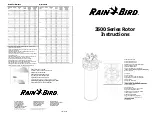
6
Assembly
Before Assembling the Instrument
(Please pay close attention to the following)
The bassoon is made from natural wood and precision metal parts. When holding
or assembling the instrument, make sure the keys are protected from damage
due to impacts, etc.
Also, if the joint cork on the bocal is tight or stiff when assembling the instrument,
apply a thin layer of cork grease and try inserting it into the receiver again. Be
careful not to apply too much cork grease. If the joint is still tight, apply a small
amount of cork grease to the receiver.
■
Assembling the Instrument
Assembling the Tenor Joint
and Double Joint
1.
Insert the tenor joint into the double
joint.
Tenor Joint
Double Joint
2.
Rotate the tenor joint to the right to
assemble. At this time, make sure that
there is even spacing between the
tenor joint’s curved hollow lining and
the bass joint’s socket.
* If the tenor joint was rotated too far,
remove the joint in a manner that does
not damage the key connections and try
assembling again. Forcibly rotating the
joint in the opposite direction when keys
are in contact with each other can dam-
age the keys.
Assembling the Bass Joint
and Double Joint
Assemble the bass joint so that the C
#
and E
b
keys do not come into contact with
the tenor joint.
1.
Insert the bass joint about halfway
into the double joint.


































